Uganda is arguably the most attractive country in Africa to bird lovers. It’s not only because of the overwhelming number of bird species recorded within its border but also because it offers easy access to several bird-rich habitats that are difficult to reach elsewhere. Uganda’s remarkable avian diversity goes over 1056 species recorded, this proves the fact that you can’t go a square4 mile on average without spotting a bird on Ugandan soil.
The key to Uganda’s diversity is its variety of habitats, semi-arid desert, savannah grasslands, montane and lowland forests, and vast wetlands, afro montane, and alpine zones which Uganda covers an altitude from 650-5000m above the sea level. According to Uganda’s analysis, it is stated that only one bird is endemic to the country, the ordinary fox weaver, however, if you consider only east Africa, then approximately, 150 species of birds are found only in Uganda (More than 10% of the regional checklist). These include African thrust, Rwenzori Turaco, flycatchers, weavers, horn-bills, warblers, sunbirds, kingfishers, cuckoos, bee-eaters, shoebills, and African green broadbill, tinker birds, Jameson’s ant-pecker, nightjars, brown-chested lapwing and other birds that can be sighted in Uganda sites.
Birding destinations
The rainforest of Uganda is seen as the most important bird habitat and that is of the greatest interest to bird watchers, particularly if they are already familiar with typical east African birds. The most enchanting birding spots in Uganda with localized species includes the Kibale forest, Semuliki Bwindi forest, and Budongo which are all conservation area. However, the Kibale forest is Uganda’s spot for forest birds, and the nearby Magombe swamp even the relatively tame botanical gardens in Entebbe will display several interesting species. Below is the topmost birds’ destination in Uganda.
QUEEN ELIZABETH NATIONAL PARK
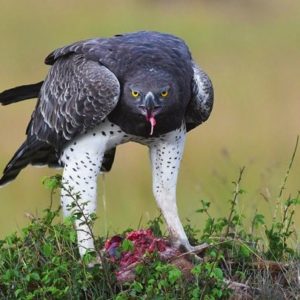
Queen Elizabeth is one of the most visited national parks in Uganda with over 600 bird species including the rarely spotted birds that migrate from Europe to Queen Elizabeth Park looking for a sustainable environment.
The park inhabits both endemic and non-endemic bird species. The enthusiasts’ birders can experience the rarest birds while on a boat cruise on the Kazinga channel via Mweya peninsular and while on a game drive to Ishasha and Kasenyi plains.
While in the Queen Elizabeth area, you will keep an eye on several bird species including pied flycatcher, White-winged terns, African crake, African skimmer, martial eagle, blue-throated roller, colored pratincole, Sedge warbler, sooty chat, black-and-white shrike-flycatcher, Grey-headed kingfisher, northern black flycatcher, black-headed gonolek, Slender-tailed nightjars, mustached grass warbler, Verreaux eagle-owl, Malachite, Red-chested Sunbird, slender-billed weaver, Grey crowned-crane, Hamerkop, African jacana, Grey-capped warbler, Gull-billed tern, and White-winged terns and many others.
KIBALE NATIONAL PARK
Kibale is a birdwatcher’s paradise. More than 370 species have been recorded and many are forest specials, including the sought-after African pitta. Apart from chimpanzee tracking, bird watching can also take place due to dense and thick vegetation cover that attracts birdlife. Four bird species are endemic to only this park such as Nathan’s francolin, Cassin’s spinetail, Masked Apalis, and blue-headed bee-eater.
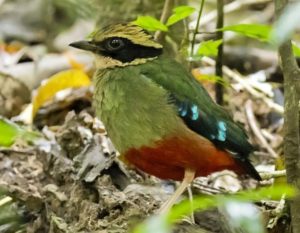
The best bird-watching spot in Kibale national park is the Bigodi Wetland area, this is a community-based project designed for enthusiasts birders to enjoy birding for over four hours with professional guides. The sanctuary is a great domain for several bird species such as snowy-crowned robin-chat, speckled tinkerbird, Bocage’s bushshrike, speckle-breasted woodpecker, white-winged swamp-warbler that prefer to linger in scorching papyrus and other species.
Other related bird species that can be found in Kibale national park include the brown and Scaly-breasted Illadopses, collared and black-capped Apalis, hulking great blue Turaco, brown-chested Alethe, phantom-like black-eared and Abyssinian ground-thrushes, black-bellied seed cracker, grey-throated, African grey parrot, yellow-billed barbets, blue-throated roller, African finfoot, black bee-eater, crowned eagle, red-chested owlet, Afep pigeon, and white-naped pigeons mention but a few.
NOTE: Birding in Kibale national park is year-round but the best time is March, April May and stretches from September to November, the prolific period is June to September, in this period, there is plenty of food coloration of birds takes place. Migratory birds can also be seen from November to April. However, rainstorms during this season are high and it can affect your watching time more than in the dry seasons from December to February and June to July months where rain is modest.
SEMULIKI NATIONAL PARK
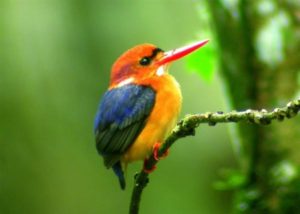
Semuliki national park is one of the best bird-watching destinations in Uganda with over 450 bird species. The park is found in the Albertine rift valley in the western part of Uganda and it covers the extension of the vast Ituri forest in Congo. It’s called the birder’s haven because it harbors over 50% of the total number of birds inhabit in Uganda including the Guinea-Congo biome species that is endemic to only this park. Semuliki national park inhabits several species that are more dominant in central Africa than in any other east African country such birds include, the Congo Serpent Eagle, the Long-tailed Hawk, Nkulengu Rail, Black-wattled Hornbill, Lyre-tailed Honeyguide, and many others
Other bird species to look out for in Semuliki national park include the African piculet, Maxwell’s black weaver, black dwarf hornbill, blue-billed malimbe, yellow-throated nicator, piping hornbill, yellow-throated cuckoo, orange weaver, white-crested hornbill, red-billed dwarf hornbill, capuchin babbler, swamp palm bulbul, Blue Swallow, White-throated Blue Swallow, Common Stonechat, Toro Olive Greenbul, White-bellied Kingfisher, Lowland Akalat, Batas’s Nightjar, Black Saw-wing, Swamp Nightjar, Cassin’ Spinetail, Purple-throated Cuckoo-shrike, Sabine’s Spinetail, Shining-blue Kingfisher, Double-toothed Barbet, and many others.
RWENZORI MOUNTAINS NATIONAL PARK
The Rwenzori Mountains located in western Uganda, are home to more than 200 bird species, including 19 Albertine Rift valley endemics, with several habitats ranging from the high altitude of 1800m and open montane grasslands to peat bogs, and glaciers. With snowcapped peaks reaching 5,110m. There are different bird species found in different altitudes and zones with a conducive environment that can sustain birdlife. Most of the birding to see include slender-billed starling, Rwenzori Turaco, long-eared owl, Francolin, blue-headed and golden-winged sunbird, Ruwenzori Brown Woodland Warbler Archers’ robin-chat, Lagden’s bush-shrike, white-starred robin, slender-billed starling, cinnamon-chested bee-eater, scarlet-tufted malachite sunbird, bearded vulture, and Rwenzori Batis. These birds can be spotted on a nature walk or a mountain hiking to one of the Rwenzori peaks.
BUDONGO FOREST
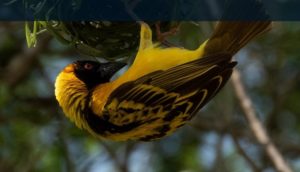
Budongo forest is found within Murchison falls national park on the Albertine rift valley edge, the forest harbors over 350 species of bird. Also serves as a habitat for several chimpanzees. Birds such as African dwarf kingfisher, Ituri Batis, chestnut-capped flycatcher, Nahan’s francolin, Cassin’spine tail, and others can be spotted in the forest.
Budongo Forest consists of two has two sections – Kaniyo Pabidi (Murchison Falls National Park), and Busingiro areas found south of Murchison protecting the most extensive natural forest area in East Africa. At Royal mile lookout for the cagey and loitering dainty chestnut-capped flycatcher, chocolate-backed, Cassin’s hawk-eagle, Fork-tailed drongo, Black kite, blue-breasted and. The forest is full of illadopses and alethes, and the diversity of greenbuls here is simply incredible. But for those who don’t fancy cryptic birds, there are plenty of more colorful species such as the white-thighed hornbill and black bee-eater.
LAKE MBURO NATIONAL PARK
Lake Mburo national park is one of the best birding destinations in Uganda with over 350 bird species that make one of the major activities in the park
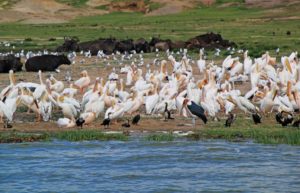
The best birding spots in Lake Mburo national park are Rwonyo and Warukiri where a variety of bird species can be spotted such as blue-napped Mousebird, red-faced barbet, Tabora cisticola, and green-capped Eremomela, Golden-tailed woodpecker, shoebill, spot-flanked barbet, papyrus canary, papyrus gonolek, and grey penduline tit. These are some of the local inhabitants commonly seen in the park.
Some birds prefer residing in the swamps, and waterside thickets, and these include the African finfoot, papyrus gonolek, white-winged warbler, African water rail, white-backed night-heron, and giant kingfishers. Other species prefer to populate in mixed woodlands and grasslands such as African wattled plover, trilling cisticola, emerald-spotted wood dove, red-necked spurfowl, African fish eagle, black-bellied bustard, yellow-throated longclaw, Nubian Woodpecker, Abyssinian ground hornbill, lilac-breasted and broad-billed roller, brown parrot, red-headed lovebird, Narina, northern black flycatcher trogon, crested francolin and common scimitar bill, southern red bishop, marsh owl, pennant-winged nightjars and others. Some of these birds can be spotted at night drives and on horse rides an activity that is carried out only in Lake Mburo national park.
MABAMBA BAY WETLAND
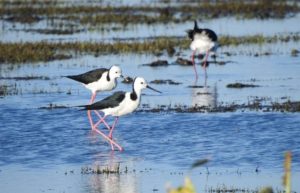
Mabamba bay is located on the edge of Lake Victoria. It’s the few places in Uganda where the rare shoebill can be spotted. It’s a fascinating experience when you encounter the shoebill and being in the vicinity of Lake Victoria shores provides the best conditions, especially for water-loving birds. To explore and enjoy watching birds on the Mabamba wetland is to take a canoe ride this will lead you to plenty of birds such as the Malachite Kingfisher, Black Kite, Swamp Flycatcher, Black-Headed Heron, Pied Kingfisher, the Rare Shoebill and others. The swamp also harbors an extensive mass of migratory birds such as Gull-billed Tern, Papyrus Gonolek, Blue Swallow, and White-Winged Tern. Others include lesser jacana, Squacco heron, waders, spur-winged goose, goliath heron, palm-nut vulture, northern brown-throated weaver, and many others.
BWINDI IMPENETRABLE NATIONAL PARK
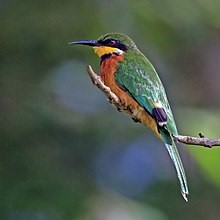 Birding in Bwindi impenetrable forest national park is the second tourist activity due to the abundance of rare species of birds. The forest populates about 350 species of birds including 23 endemic Albertine Rift valley, of all the rift valley endemics, 14 bird species are recorded only in the Bwindi impenetrable forest. African green broadbill, white robin chat, black-billed Turaco Chapin’s flycatcher collared Apalis, and Fraser’s eagle
Birding in Bwindi impenetrable forest national park is the second tourist activity due to the abundance of rare species of birds. The forest populates about 350 species of birds including 23 endemic Albertine Rift valley, of all the rift valley endemics, 14 bird species are recorded only in the Bwindi impenetrable forest. African green broadbill, white robin chat, black-billed Turaco Chapin’s flycatcher collared Apalis, and Fraser’s eagle
The most popular birding trails are the Buhoma trail, and Ruhija in Mubwindi swamp trails are popular areas to look out for black sparrow hawk, western bronze-naped pigeon, cinnamon-chested bee-eater, Cassin’s honey bird, and Pettit’s cuckoo shrike, White-chinned Prinia, mountain wagtail, pink-footed puff back, the rare tiny sunbird and the dapper brown-capped weaver. It’s a wonderful experience when birders are entertained with melodies and sounds of the birds that echo in your ears. Birds like Kivu-ground-thrust, western green tinkerbird, montane oriole, Grauer’s rush warbler welcome you with melodies that you couldn’t miss seeing, flycatchers, Waller’s, and Shulman prefer residing in snags and canopies.
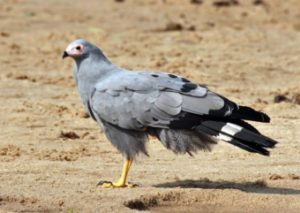
Mubwindi swamp in Ruhija is the best place to view a variety of unique and beautiful bird species although it’s a tough hike, it is a required excursion for bird watchers since the Albertine rift endemic and the rare Grauer’s broadbill inhabit here. Bird species commonly spotted include Black-billed Turaco, barred long-tailed cuckoo, olive woodpecker, red-chested fluff tail, olive-breasted and yellow-streaked greenbuls, grey cuckoo shrike, and cinnamon–chested bee-eater, African green pigeon, African harrier hawk, giant kingfisher, and crowned hornbill.
When pulling out of the original forests, in the company of green vegetation purfling the tea plantations, you can afflict with highly sought black-crowned waxbills, Rwenzori Batis, streaky and thick-billed seed-eaters, noisy Chubb’s cisticola, flycatchers, and many others. The best time to spot these birds in Bwindi impenetrable forest national park is the morning hours because most birds are out from their nests to look for food.
MGAHINGA NATIONAL PARK
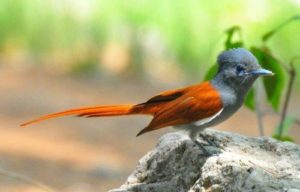
Mgahinga National Park is Uganda’s smallest national park. It covers 33.7 square kilometers and it estimates to 9-10 hours drive from south of Kampala. Above all, the park is most prominent for gorilla trekking and golden monkey tracking. Although the volcanoes, forests, and vegetation around the park also give out great spots views to birders. It is also a birding destination with over 185 species recorded of which 12 species are endemic to the Albertine Rift. Birders use the guided mountain hikes to get a wonderful view of different bird species such as Scarlet-tufted malachite sunbird, Alpine, Yellow-Vented Bulbul, Kivu ground-thrush, Archer’s robin chat, white-necked raven, black kite, Pin-tailed whydah, African paradise flycatcher, speckled Mousebird, Fire Finch Stonechat, Ruwenzori Batis, Waxbills, Olive pigeon, Ruwenzori Turaco, Grey Capped Warbler, Dusky crimson wing, Blue-headed coucal, mention but a few
MURCHISON FALLS NATIONAL PARK
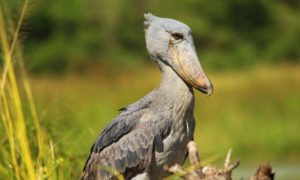
Murchison falls National Park is the oldest and largest national park in Uganda. It was named after the vigorous and spectacular waterfalls formed by a river Nile narrows from 50 meters crashing through a 7-meter gorge falling 45 meters below the rocks. Murchison falls park harbors more than 450 bird species, and birding can be done on a game drive, a boat trip on the Nile, or a nature walk. Various bird types that inhabit the park include the common, occasional, and rare birds can are found in swamps, forests, woodland, Savanah, and acacia plains. Some of the rare and occasional birds include Giant Kingfisher, Giant Heron, Shoebill stork, Abyssinian Ground Hornbills, Nightjars, Marabou stork, and Back-bellied Bustard.
Other bird species commonly spotted in the park include the gray-crowned crane, Black-headed Lapwing, white-crested Turaco, black-headed Batis, Pavel’s illadopsis, and double-toothed barbet, silver bird, red-throated beater, brown babbler, and Heuglin’s francolin, Shelley’s rufous sparrow, Buff-bellied Warbler, and bare-breasted Firefinch. There is plenty of open palm savannah, which is an excellent haunt for Senegal’s thick-knee, and the strange-looking priapic, shoebill stork can be spotted at the Nile delta.
Note: Birders must have the following requirements to enjoy the birding experience; a birder’s guide book, a pointer, a pair of binoculars, Sunglasses, hats, sturdy shoes, a spotting scope with tripod, a smartphone, a notepad, and enough water.
Therefore if you want to see a wide range of birds in Uganda for tour enthusiasts try to visit Entebbe, (for both water and forest birds), Lake Mburo (for water and acacia-associated birds), Queen Elizabeth (over 600 species of bird recorded), Murchison falls (the best place in East Africa to see the papyrus-associated rare shoebill) and Kidepo (over 50 raptors recorded) or check our birding itinerary for 13 days tour in Albertine rift valley or a short one for 7 days birding tour and we are ready to take you to any of your destinations.

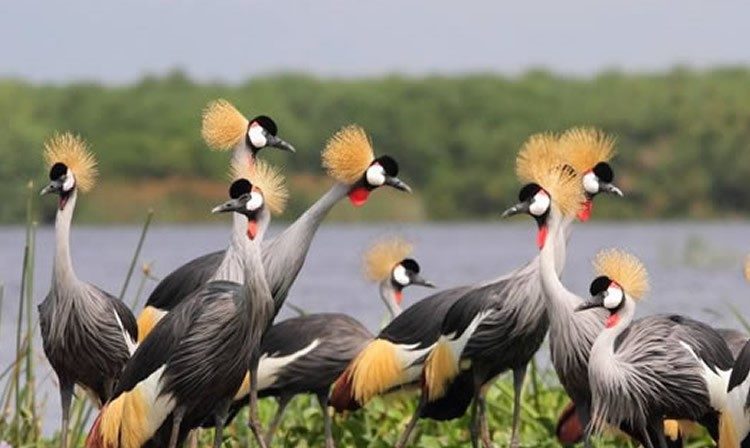
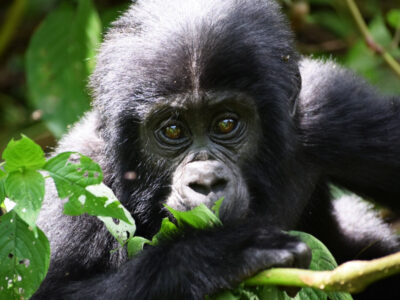
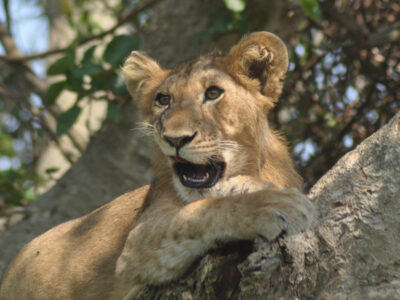
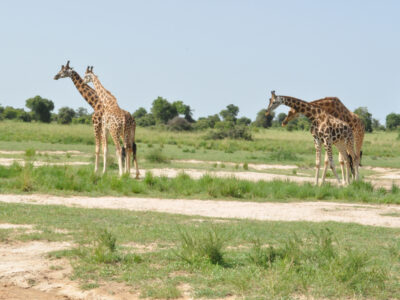
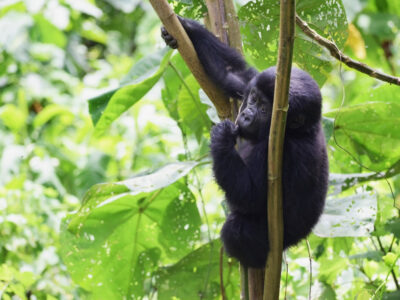
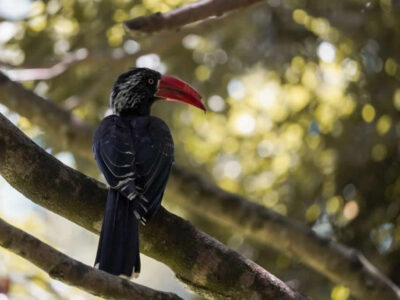
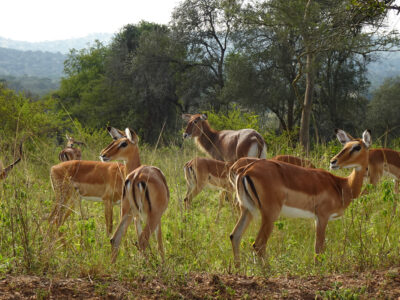
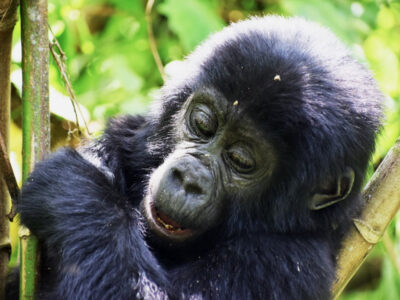
2 Replies to “Birding safaris in Uganda”
March 17, 2024